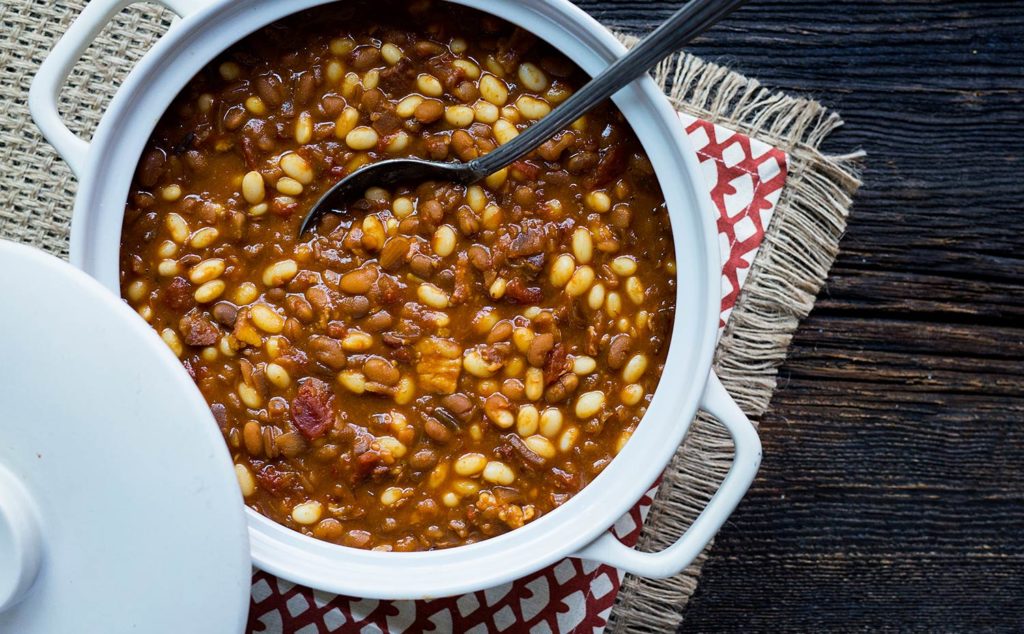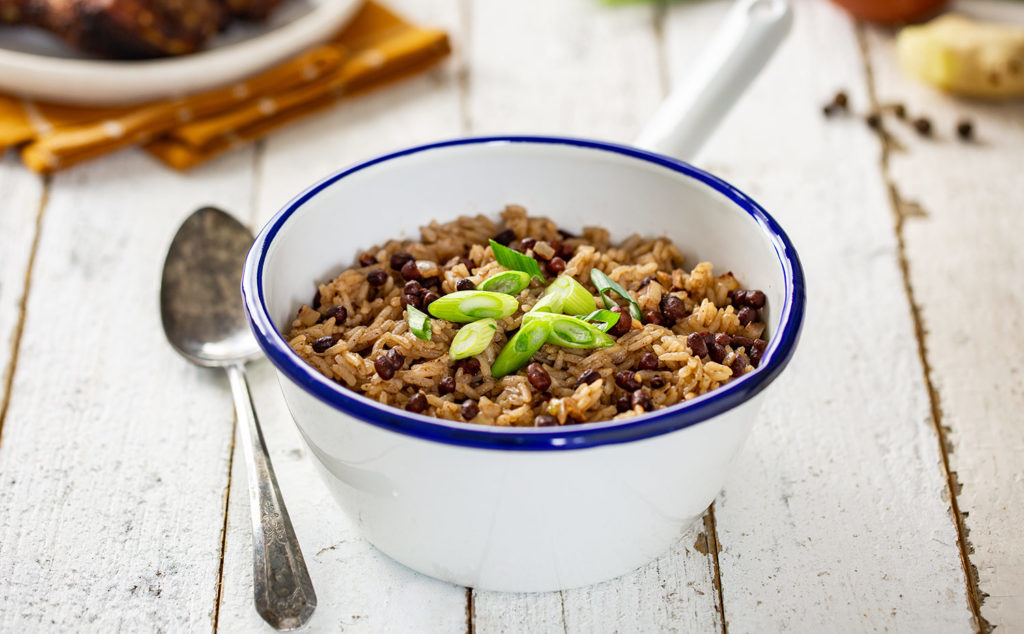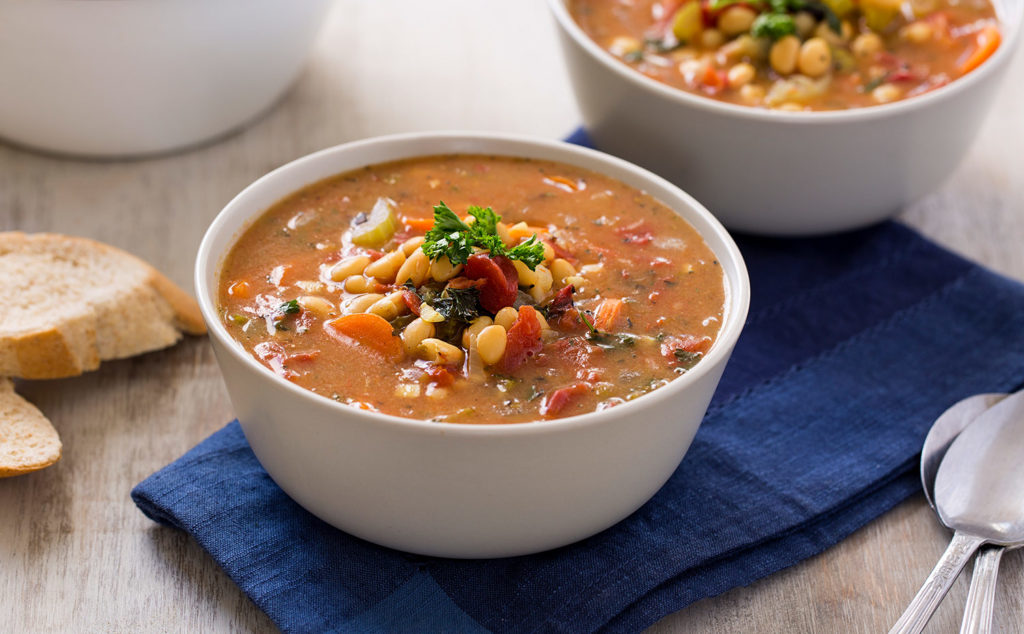Dry beans are an incredibly nutritious, versatile and inexpensive ingredient. The cost of one ½ cup serving of dry beans is about one-third the cost of canned beans.
Some people prefer using dry beans as they are unprocessed, while others prefer using canned for their convenience. Either way, beans are nutritional powerhouses. They are high in fibre, low in fat and are a good source of protein. Eating beans can lower blood cholesterol, help with weight management and blood sugar control.
Buying
You can find dry beans in grocery stores, organic food stores and bulk food stores. Look for beans in the ethnic, bulk or canned food sections. When buying dry beans, look for:
- Brightly coloured seeds
- Uniform size
- Smooth skins without chips or shriveled seed coats
Storing
Dry beans will keep for years if stored in tightly covered containers in a cool, dark, dry place, but the longer a bean is stored, the drier it becomes, which increases the cooking time.
Preparation
Cooking with dry beans is easy and rewarding, but to cook with dry beans versus canned beans you need to follow five simple steps:
- Pick through the beans: Before rinsing and soaking your dry beans, check through them and remove beans with shriveled or broken skins. And even though they go through a rigorous cleaning process before they are packaged, the occasional pebble or twig can slip through the cracks, so keep your eyes open for those as well.
- Rinse: Rinse beans under cold, running water to remove any surface dust or dirt.
- Soak: For most beans, it’s best to soak them unless you know for sure that the beans are of a high quality and are relatively fresh.
- Drain and rinse: Drain the beans, then proceed immediately to the cooking step.
- Cook: Place soaked beans in a large pot or microwavable bowl, cover with water and bring to a boil. Once boiling, reduce the heat and simmer. Add water as needed until beans are fork-tender, about 45-60 minutes.
How to Soak Dry Beans
For most beans, it is best to soak before cooking – unless they are high quality and relatively fresh.
Use 3 cups (750 mL) of water for each cup (250 mL) of sorted and rinsed beans. Then follow one of these methods:
Cooking
To cook soaked beans, use 3 cups (750 mL) water for every cup (250 mL) of soaked beans. Then follow one of these methods:
- Conventional Cooking: In a large saucepan, combine soaked beans and water. Cover and bring to a full boil. Reduce heat and simmer until fork tender, about 45 to 60 minutes.
- Microwave Cooking: In a 4 qt. (4 L) microwaveable casserole dish combine 3 cups (750 mL) of water and 1 cup (250 mL)
Dry Bean Prep
Watch how to cook with dry beans!
Cooking Tips & Methods
- Make sure your saucepan is big enough, as beans double or triple in size during cooking.
- To prevent foaming, add 1 teaspoon (5 ml) of oil to the cooking water.
- Seasonings like garlic, onion or herbs can be added while cooking beans.
- Always cook beans slowly, as cooking them too quickly can break the seed coats. To achieve optimal cooking, beans can be tested as they near the prescribed cooking time.
- Tomatoes, vinegar or other acidic ingredients should be avoided until beans are tender. Acids slow the cooking process.
- Beans naturally have a toxic compound in them called phytohemagglutinin. This is destroyed by adequate cooking. For slow cooker recipes, pre-soaked beans should be boiled for 10-12 minutes in fresh water before adding to the crock pot.
- Using baking soda to aid in cooking beans is not recommended. If hard water is your only choice and you need to add baking soda, limit the amount to 1/8 teaspoon per 2 cups (0.5 ml per 500 ml) water.
Try These Dry Bean Recipes

Comfy Baked Beans
This classic baked bean recipe may take some time to prepare, but it’s oh-so worth it!

Caribbean Rice & Beans
This flavourful Caribbean-inspired rice and beans is your next weeknight side-dish. You’ll be asking for seconds!

Garden Vegetable Soup
This soup is easy to pull together using pantry staples and tastes as though it’s fresh from the garden!











